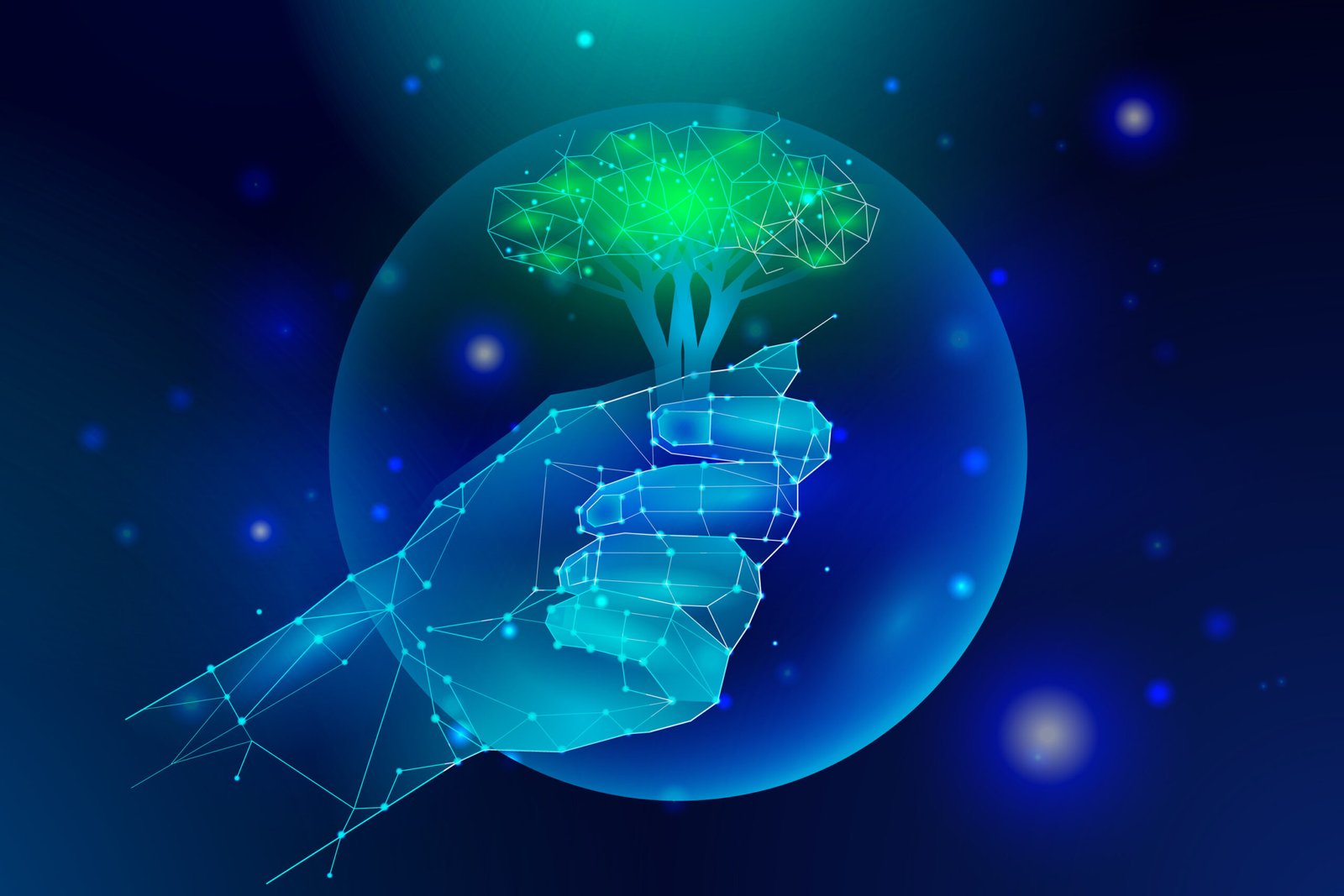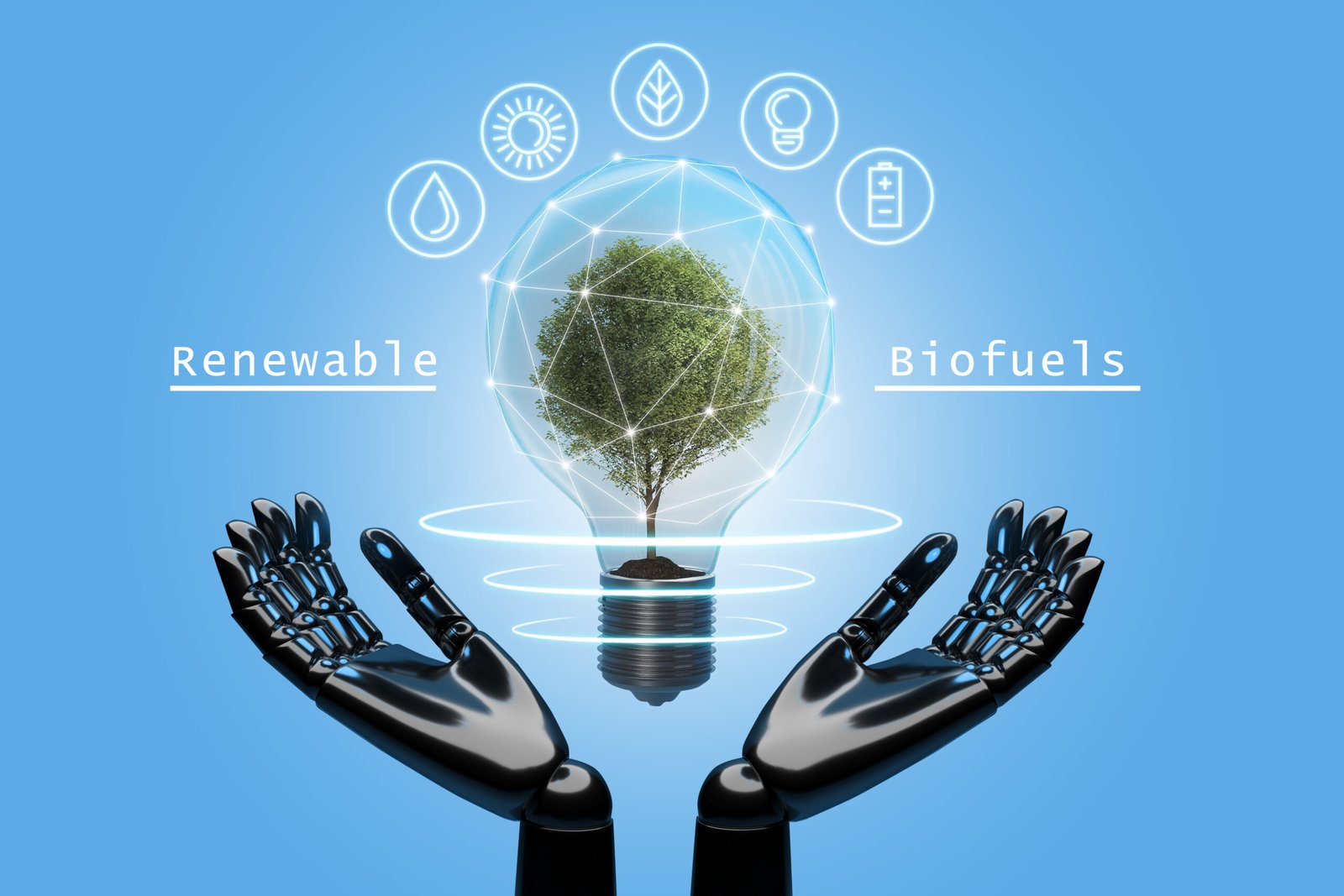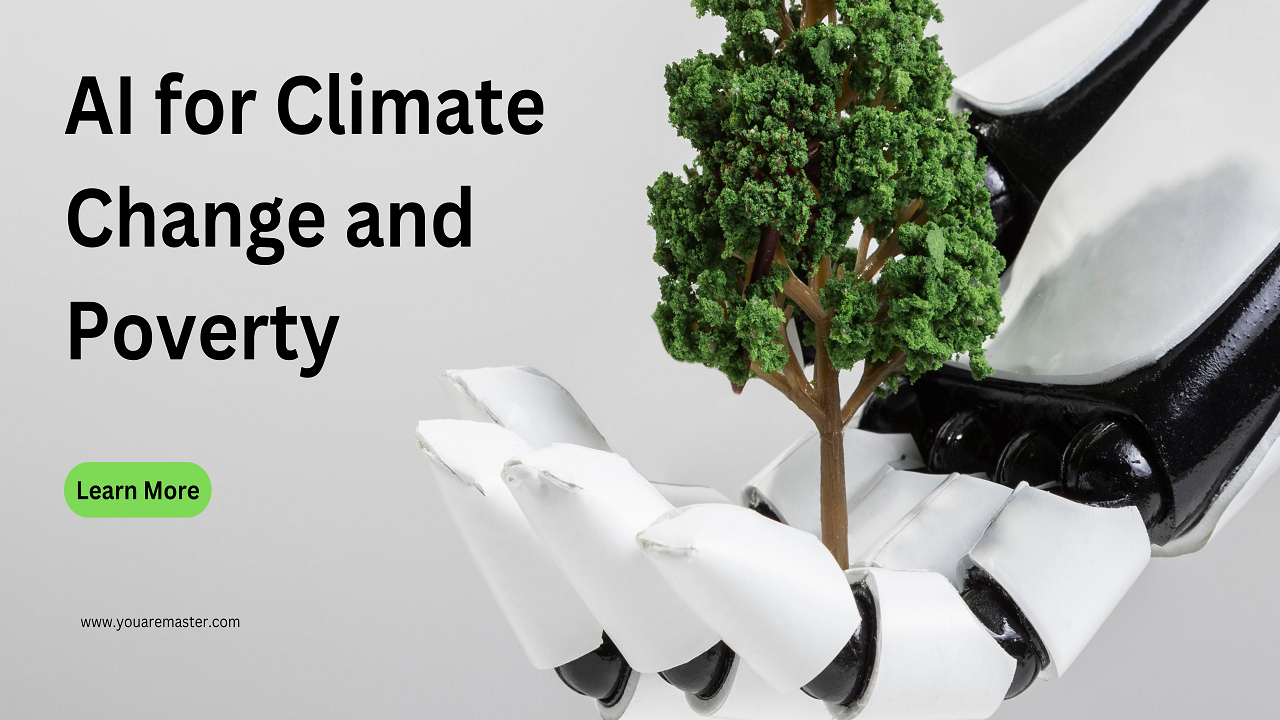AI for Climate Change and Poverty: How Artificial Intelligence Can Help
Introduction
AI for Climate Change and Poverty:Artificial Intelligence (AI) is increasingly acknowledged as a potent instrument capable of tackling intricate global issues such as climate change and poverty. In this article, we will delve into the potential of AI in addressing these pressing challenges and the manifold benefits it can offer to humanity.
Understanding AI and the Global Predicaments
AI denotes the replication of human intelligence in machines programmed to learn and think akin to humans. It encompasses diverse technologies like machine learning, natural language processing, and computer vision. Concurrently, climate change and poverty emerge as two paramount challenges confronting the world today.

AI’s Role in Mitigating Climate Change
1. Monitoring and Predictive Analysis
AI possesses the capability to analyze extensive datasets from satellites, sensors, and various sources to monitor environmental changes and forecast future trends. This data aids scientists and policymakers in making well-informed decisions to alleviate the impact of climate change.
2. Sustainable Resource Management
Through optimizing energy consumption, water allocation, and waste management, AI can advocate for sustainable practices, thereby curtailing greenhouse gas emissions and conserving natural resources.
3. Climate Modeling and Prediction
AI-driven climate models can simulate diverse scenarios, enabling the assessment of potential outcomes of different interventions. This facilitates proactive measures to adapt to evolving climatic conditions.

AI’s Impact on Combatting Poverty
1. Economic Empowerment and Job Creation
AI technologies harbor the potential to spawn new industries and employment opportunities, particularly in sectors like renewable energy, healthcare, and education. By equipping individuals with valuable skills and resources, AI can aid in lifting people out of poverty.
2. Access to Education and Healthcare
AI-powered platforms can furnish personalized learning experiences and deliver essential healthcare services to marginalized communities, transcending geographical barriers. This can bolster education outcomes and enhance overall well-being, thereby diminishing poverty levels.
3. Poverty Mapping and Targeted Interventions
Leveraging data analytics and machine learning algorithms, AI can identify regions plagued by high poverty rates and craft targeted interventions to address specific needs. This approach ensures efficient allocation of resources to maximize impact.

Ethical Considerations and Challenges
While AI holds promise in addressing global challenges, it also engenders ethical concerns such as biases in algorithms and data privacy issues. Ensuring equitable access to AI solutions for all segments of society remains paramount.
-
Algorithmic Bias: AI algorithms are only as good as the data they are trained on. Biases present in training data can lead to discriminatory outcomes. For instance, an AI system used for poverty mapping might inadvertently overlook certain demographics due to historical biases in data collection.
-
Data Privacy: AI solutions often rely on vast amounts of personal data. Mitigating climate change and poverty may involve collecting data on energy consumption, resource allocation, or individual financial situations. Robust data privacy regulations and responsible data management practices are crucial to ensure user trust and prevent misuse of information.
-
Equitable Access: Unequal access to AI technologies could exacerbate existing inequalities. If AI-driven solutions are only available to wealthier nations or privileged communities, the gap between rich and poor could widen. Ensuring affordability and promoting digital literacy programs are essential steps to bridge this divide.
-
Transparency and Explainability: Many AI systems operate as “black boxes,” making it difficult to understand how they arrive at decisions. This lack of transparency can erode public trust and hinder accountability. Developing explainable AI models that provide clear reasoning behind their outputs is crucial for ethical implementation.
Addressing these challenges is paramount for maximizing the positive impact of AI for Climate Change and Poverty. Here are some potential solutions:
-
Developing Ethical Guidelines: Collaborative efforts by governments, tech companies, and civil society organizations can establish ethical frameworks for AI development and deployment in areas like climate change and poverty reduction.
-
Promoting Algorithmic Fairness: Researchers and developers should prioritize techniques to mitigate bias in AI algorithms, such as using diverse training datasets and implementing fairness checks throughout the development process.
-
Prioritizing Data Privacy: Stringent data privacy regulations and user consent mechanisms can help protect individuals’ data while enabling responsible AI development for social good.
-
Fostering Digital Inclusion: Investing in digital infrastructure and promoting digital literacy programs can ensure equitable access to AI solutions for all segments of society.

Collaborative Efforts and Partnerships
Successfully tackling climate change and poverty demands a multi-stakeholder approach, uniting the strengths of various actors. Here’s how collaborative partnerships can leverage AI for Climate Change and Poverty (AI4CCP) solutions:
-
Government-Industry Collaboration: Governments can establish regulatory frameworks that incentivize responsible AI development and deployment for social good. Public-private partnerships can encourage businesses to invest in AI4CCP research and development, creating innovative solutions for areas like renewable energy optimization, sustainable resource management, and targeted poverty alleviation programs.
-
Academia-Civil Society Partnerships: Universities and research institutions can provide the scientific expertise and cutting-edge AI research needed for AI4CCP innovation. Civil society organizations (CSOs) working at the grassroots level can offer valuable data and insights into the specific needs and challenges faced by vulnerable communities. Collaborative efforts can ensure AI solutions are not only technologically advanced but also socially relevant and culturally appropriate.
-
Global Knowledge Sharing: International cooperation can foster knowledge exchange and technology transfer, enabling developing nations to access and adapt AI solutions pioneered in other parts of the world. This global collaboration can accelerate progress towards achieving the Sustainable Development Goals (SDGs) related to climate change and poverty reduction.
Examples of existing partnerships:
- The AI for Good initiative launched by the United Nations focuses on harnessing the potential of AI to address global challenges like climate change and poverty.
- The Climate TRACE coalition utilizes AI to track greenhouse gas emissions and promote environmental transparency.
Conclusion
In summation, AI harbors the potential to play a pivotal role in surmounting global challenges like climate change and poverty. By harnessing technological prowess and fostering collaboration, we can usher in a more sustainable and equitable future for generations to come.
FAQs
1. How can AI contribute to reducing greenhouse gas emissions?
AI can optimize energy efficiency, facilitate smart grid management, and promote the transition to renewable energy sources, thereby diminishing reliance on fossil fuels and lowering emissions.
2. Are there any risks associated with relying too heavily on AI to address global challenges?
While AI offers promising solutions, overreliance on technology poses risks, potentially undermining human decision-making and neglecting the social dimensions of complex issues like poverty and climate change.
3. How can AI promote social equity and inclusivity?
By designing AI systems with diversity and inclusivity in mind, addressing biases in algorithms, and ensuring equitable access to technology and opportunities, AI can contribute to building a more inclusive society.
4. What are some examples of successful AI initiatives in combating poverty?
Initiatives like microfinance platforms, healthcare chatbots, and precision agriculture systems have showcased AI’s potential in enhancing livelihoods and bolstering economic opportunities for disadvantaged populations.
5. How can individuals contribute to leveraging AI for positive social impact?
Individuals can advocate for ethical AI principles, support organizations championing AI-driven solutions for social good, and educate themselves and others about the potential benefits and risks of AI technologies.

